Discover how a bimodal integration strategy can address the major data management challenges facing your organization today.
Get the Report →Feed Zoom Data into FineReport
How to set Zoom data as a JDBC data source in FineReport.
The CData JDBC Driver for Zoom fully implements the JDBC standard and can provide Zoom data connectivity to a wide variety of BI, reporting, and ETL tools and custom applications. In this article, we explain how to set Zoom data as JDBC data source in FineReport and view Zoom data as a table in the Report Designer.
Set Up a JDBC Data Source of Zoom Data
Follow the instruction below to set Zoom data as a FineReport database connection.
- Copy the cdata.jdbc.api.jar file from the lib folder in the CData JDBC Driver for Zoom installation directory to the lib folder of the FineReport installation directory. You will need to copy the cdata.jdbc.api.lic file as well.
- From the Server tab, select Define Data Connection, click to add a new connection, and click JDBC.
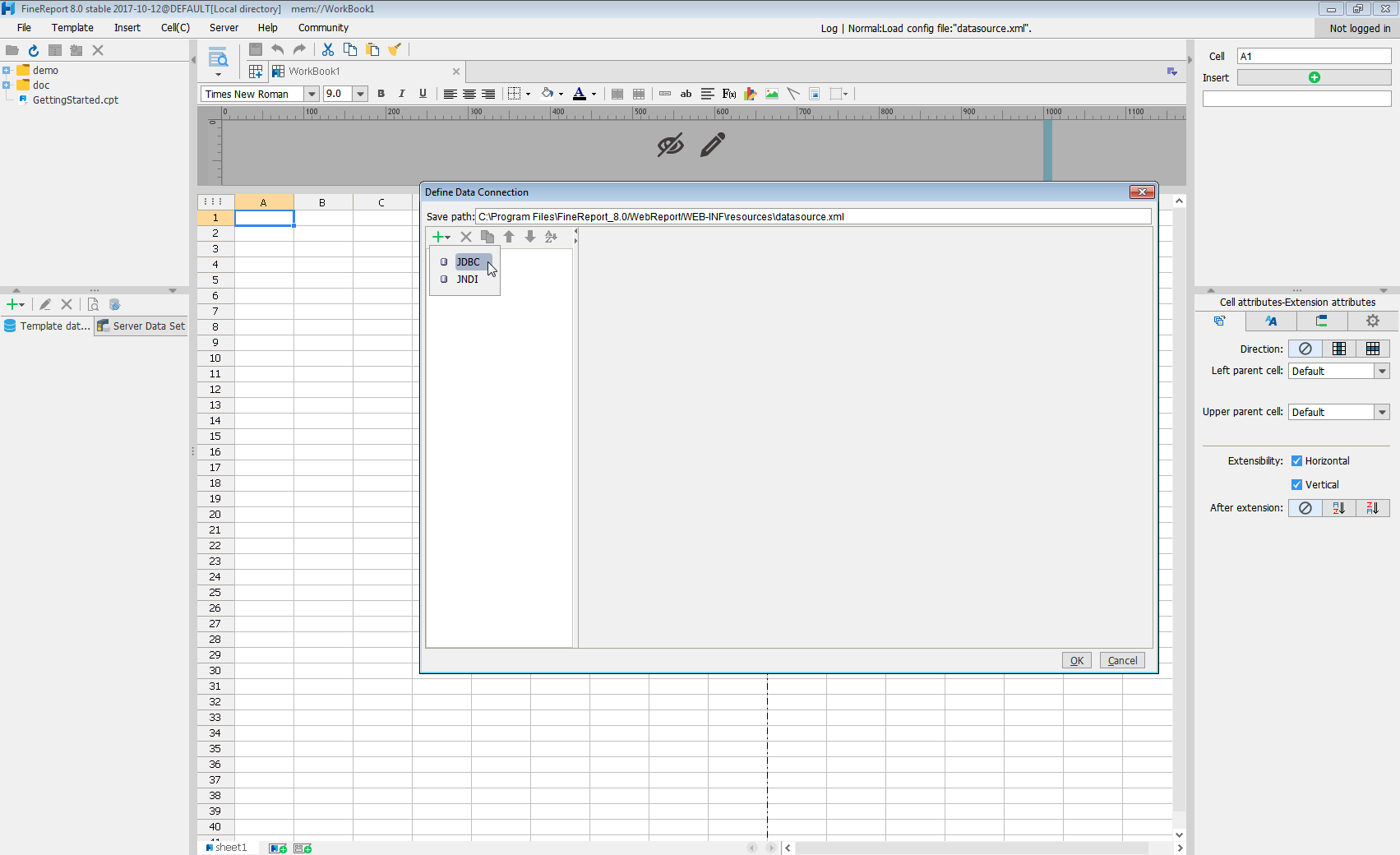
Next we will set up the data connection definition in the window.
- Database: Others
- JDBC Driver: cdata.jdbc.api.APIDriver
-
URL: A standard JDBC connection string using semicolon-separated connection properties.
Start by setting the Profile connection property to the location of the Zoom Profile on disk (e.g. C:\profiles\Zoom.apip). Next, set the ProfileSettings connection property to the connection string for Zoom (see below).
Zoom API Profile Settings
To authenticate to Zoom, you can use the OAuth standard to connect to your own data or to allow other users to connect to their data.
First you will need to create an OAuth app. To do so, navigate to https://marketplace.zoom.us/develop/create and click Create under the OAuth section. Select whether or not the app will be for individual users or for the entire account, and uncheck the box to publish the app. Give the app a name and click Create. You will then be given your Client Secret and Client ID
After setting the following connection properties, you are ready to connect:
- AuthScheme: Set this to OAuth.
- InitiateOAuth: Set this to GETANDREFRESH. You can use InitiateOAuth to manage the process to obtain the OAuthAccessToken.
- OAuthClientID: Set this to the OAuth Client ID that is specified in your app settings.
- OAuthClientSecret: Set this to the OAuth Client Secret that is specified in your app settings.
- CallbackURL: Set this to the Redirect URI you specified in your app settings.
Built-in Connection String Designer
For assistance in constructing the JDBC URL, use the connection string designer built into the Zoom JDBC Driver. Either double-click the JAR file or execute the jar file from the command-line.
java -jar cdata.jdbc.api.jarFill in the connection properties and copy the connection string to the clipboard.
![Using the built-in connection string designer to generate a JDBC URL (Salesforce is shown.)]()
When you configure the JDBC URL, you may also want to set the Max Rows connection property. This will limit the number of rows returned, which is especially helpful for improving performance when designing reports and visualizations.
A typical JDBC URL is below:
jdbc:api:Profile=C:\profiles\Zoom.apip;Authscheme=OAuth;OAuthClientId=your_client_id;OAuthClientSecret=your_client_secret;CallbackUrl=your_callback_url; - Click Connection pool attributes and set Test before getting connections to No.
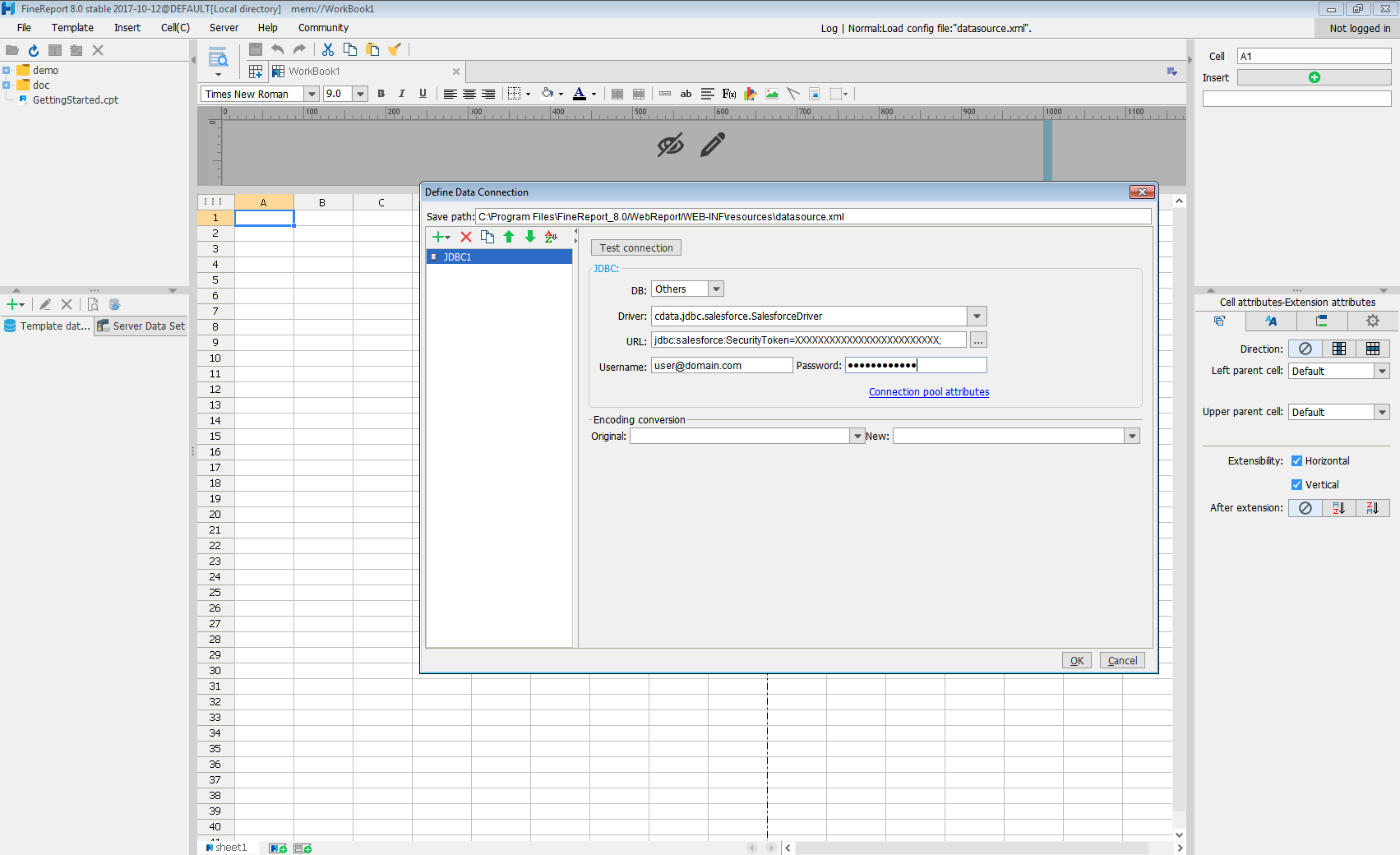
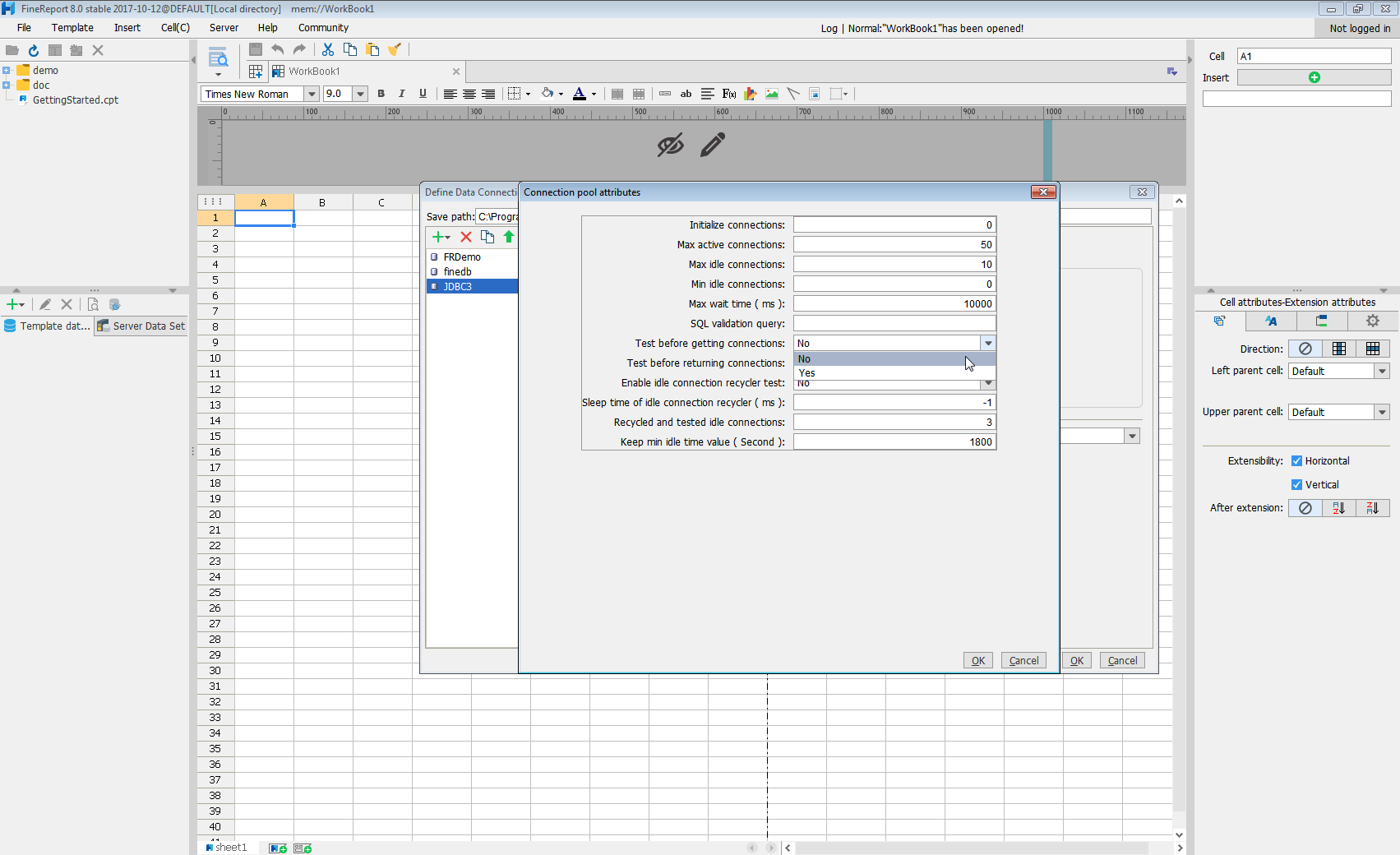
Click Test connection to ensure you have configured the connection properly. With the connection to Zoom set up, you can use it as FineReport data source.
Select Zoom Data in the Report Designer.
- Click to add a new template data set and select DB query to open the database query window.
- Choose the JDBC connection that you created from the dropdown list.
- The Zoom entities will appear as tables on the left pane.
- Write a SELECT statement for the Zoom data tables and columns that you want to load.
- Click preview and data is shown as table.
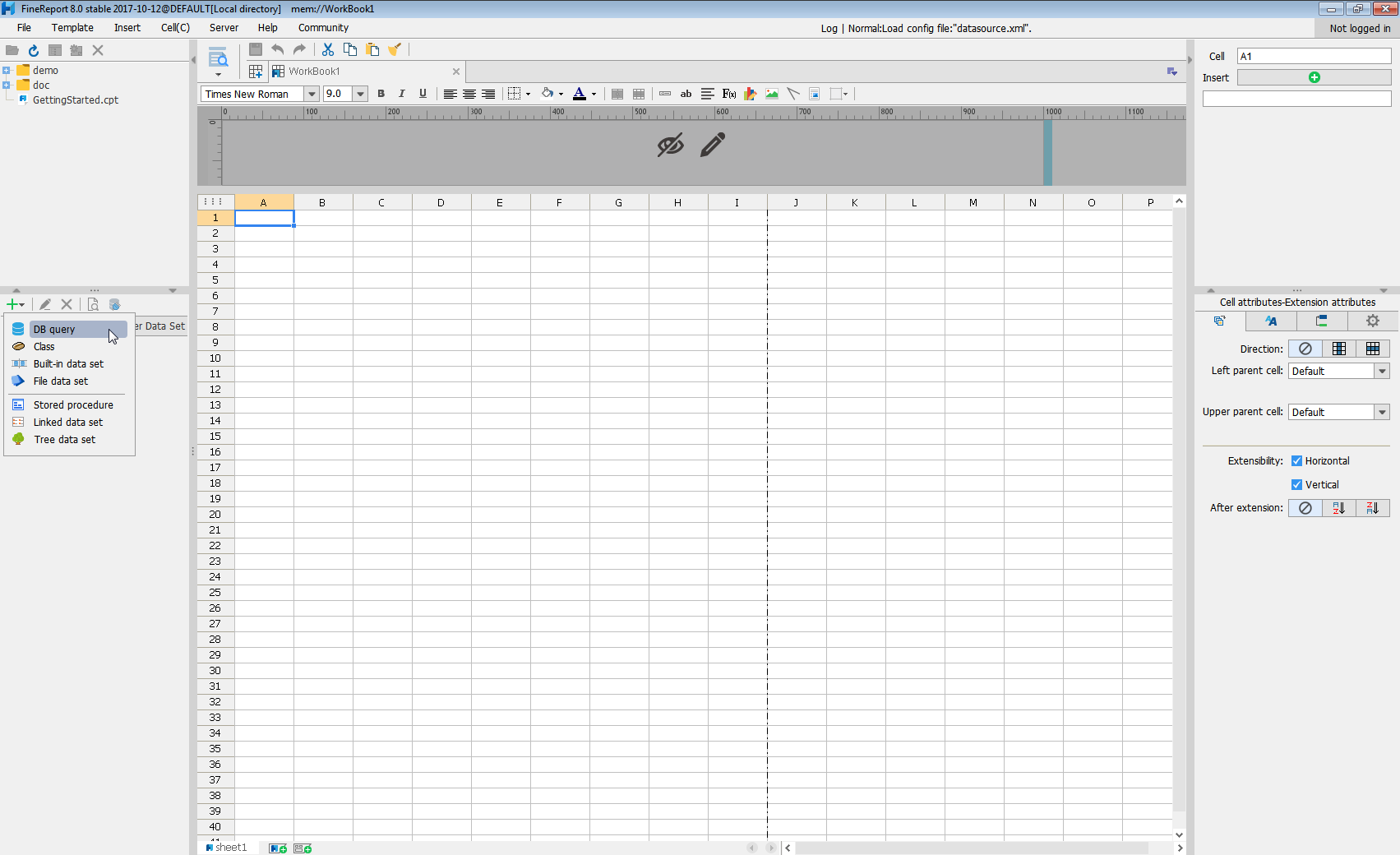
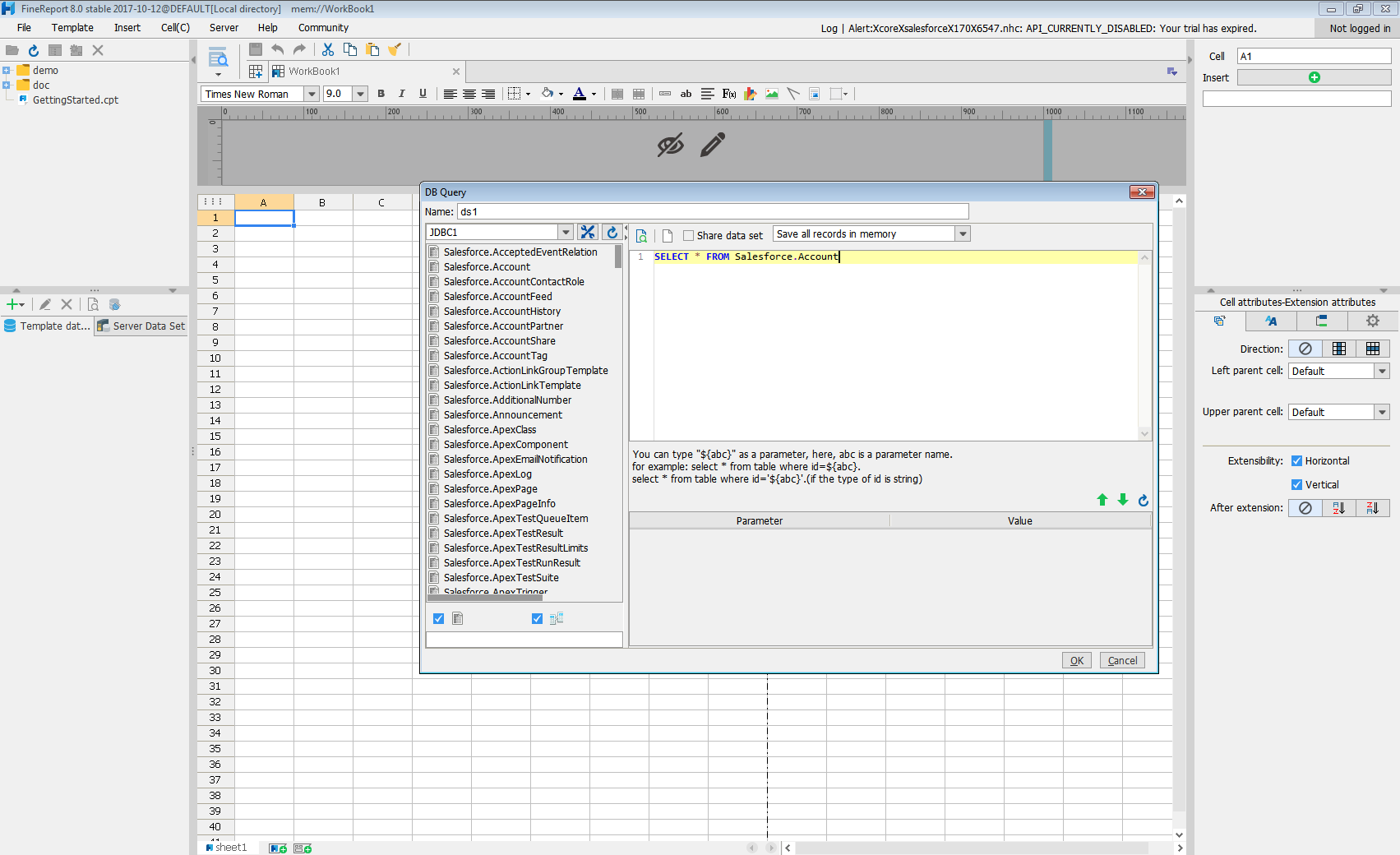
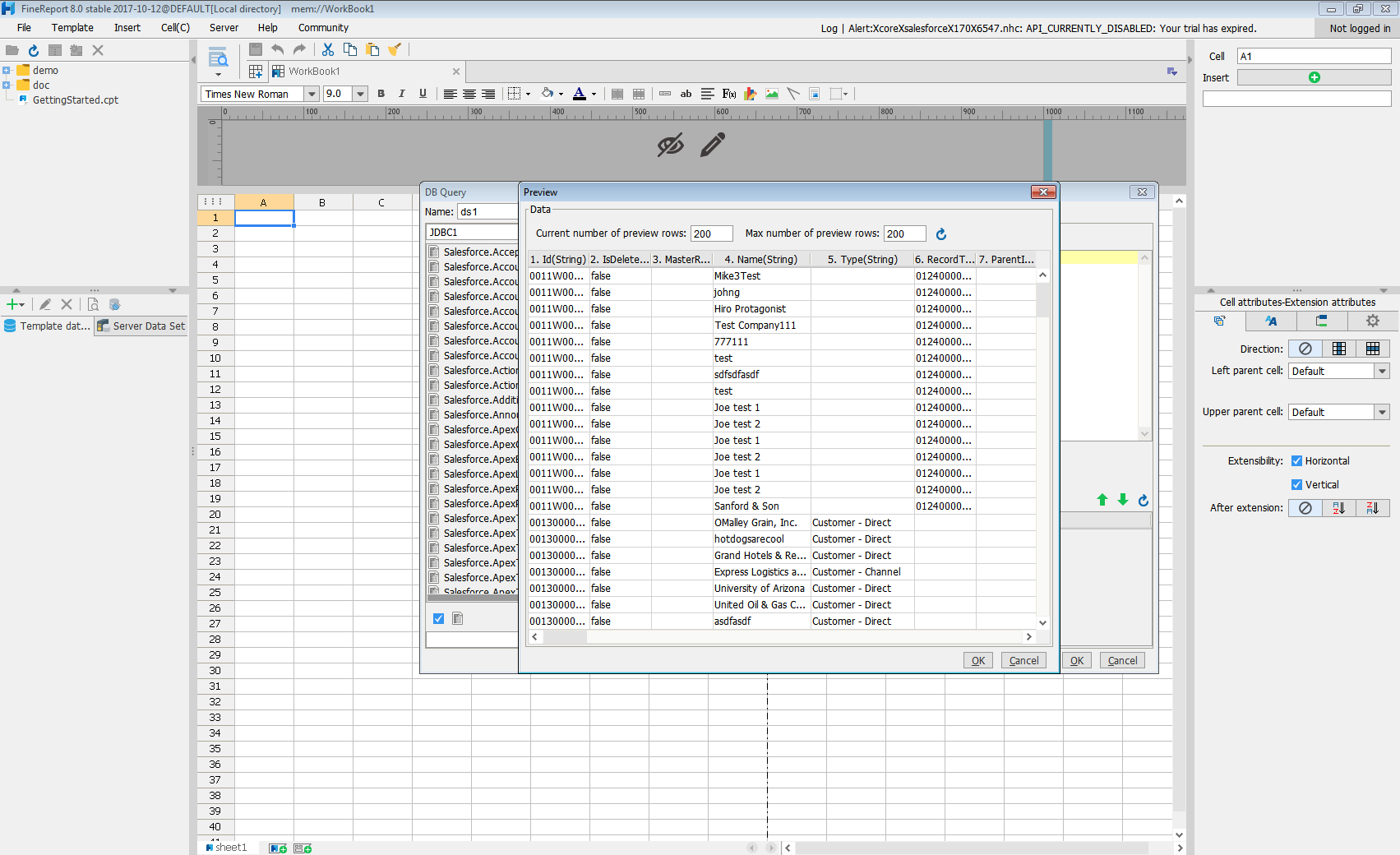
With these simple steps, Zoom can be used as a JDBC data source in FineReport.







